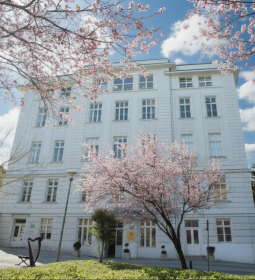In the UK there is large selection of formats for obtaining secondary education, of which the most solid is study at a boarding school. What happens within the walls of such institutions is reliably illustrated in the famous Harry Potter books written by J.K. Rowling. Let's take a closer look at what realities of British boarding schools the writer reflected in her work about the wizard boy.
History of origin
Boarding schools are institutions where students stay for the entire school year. In the UK, they are elite educational institutions (usually private), providing children with a high quality secondary education. In addition, the student is provided with accommodation, meals, a number of extracurricular activities. On holidays, schoolchildren go home; in some boarding houses, children are allowed to leave every weekend or even visit as in a regular school (day type).
In other countries of this type, institutions called boarding schools are aimed at helping children from socially vulnerable sectors of society.
Boarding schools in Great Britain began their existence in the Middle Ages: boys were sent to study in monasteries or rich families so that they became independent (and it was profitable to "send" an extra mouth out of the family). In the 12th century, schools were opened at monasteries, which was a prerequisite for the emergence of non-state boarding schools in Britain. Since the 16th century, aristocrats began to abandon home education, giving preference to schools, since interaction with other children was a clear advantage.
British boarding schools have long been considered elite, prestigious institutions that guarantee quality education. They are different: available for poor families or elite, the selection of which is strict and limited.
Comparing Hogwarts and real schools in the UK
Hogwarts School is a fictional institution based on real British boarding schools. Thanks to "Harry Potter" we can get a detailed idea of the life of such institutions. What unites them?
- Like many real-life guesthouses, Hogwarts is out of town, surrounded by beautiful scenery;
- The school created by Rowling is an enchanted castle, however, real students often study in ancient buildings;
- Having your own motto;
- Selection for the School of Magic is tough, and it looks like real boarding schools: not everyone can get there, priority is given to promising and gifted children;
- Real boarding schools and Hogwarts have in common the fact that each faculty is led by a professor-dean, who is responsible for students, is engaged in teaching and organizational activities.
- The faculty also has a headman - a boy or girl who is studying in the last years. They are appointed by the dean. Heads keep order, help other students. Involving students in such responsibilities contributes to the development of responsibility and leadership qualities;
- The faculties are in a mode of rivalry with each other, which, on the one hand, ensures cohesion between students, on the other hand, it makes this competition unhealthy: the participants begin to resort to any, sometimes illegal, tricks for the sake of superiority. Everything described above is typical for both worlds - fictional and real;
- Hogwarts has four faculties, in the original text they are called house , which means " house ." This corresponds to historical realities: schoolchildren were divided into houses (dormitories) where they lived. By tradition, the designation house has remained in common use. However, in the School of Magic, the student is indeed settled in a certain part of the castle corresponding to his faculty. If in the Harry Potter universe the magic hat is responsible for the distribution of faculties, then in the current schools of Britain they are guided by the desire for balance, for an equal number of students in the "houses";
- The main sport in the Harry Potter universe is Quidditch, which is comparable in popularity to football in the real world. In boarding schools, sports are also not bypassed: games in a team are beneficial to students, developing in them responsibility for others, the ability to work together;
- British boarding schools take care of the versatile development of the student, preparing him for the future life and future career. Children are also being prepared to enter universities. Due to the lack of pressure from the state, private schools organize the learning process in their own way: in addition to the main subjects, a number of additional subjects are introduced, which have a positive effect on admission to prestigious universities. It's about the same at Hogwarts: students are helped to choose their future careers, in senior years, students choose individual subjects to pass.
According to Rowling's idea, Hogwarts is funded by the Ministry of Magic, which implies free education and students' stay within the walls of the institution. It is different with real boarding houses. There are public schools in the UK (students pay for food and accommodation), but private schools still prevail, the payment for which comes entirely from the pockets of students.
Thanks to the creations of J.K. Rowling, we can easily imagine how the education and life of students of private boarding schools in the UK is built. The writer reflected in detail the life of schoolchildren in her books, demonstrating both the pros and cons of such institutions.










